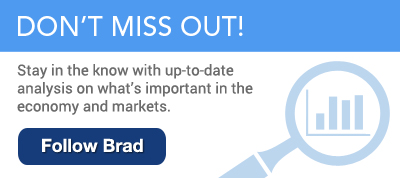 Last week gave us some clarity over whether the consumer will continue to lead economic growth and whether the manufacturing sector is as bad as the surveys suggest. Unfortunately, most of the data came in below expectations, showing that while the recovery continues, there is little evidence of any acceleration this quarter.
Last week gave us some clarity over whether the consumer will continue to lead economic growth and whether the manufacturing sector is as bad as the surveys suggest. Unfortunately, most of the data came in below expectations, showing that while the recovery continues, there is little evidence of any acceleration this quarter.
Last week’s data
Retail sales disappoint. Expectations were for a small decline of 0.1 percent for the headline number, from flat the previous month, but the actual decline was 0.3 percent. Core retail sales, which exclude autos, improved slightly on the previous month, from a drop of 0.4 percent to a drop of 0.1 percent, but they were still below expectations for a gain of 0.2 percent. In addition to the disappointing August numbers, June and July were both revised down. Although sales are still up 2.4 percent over the previous year—an indication that growth continues—they are down from an average of 4.3 percent during the recovery. Momentum is slowing.
Consumer confidence misses expectations. Friday’s University of Michigan Consumer Confidence release also disappointed, staying flat at 89.8 rather than rising to the expected 91.0. Although the number was below expectations, it did break a three-month streak of declines. In addition, the figure remains in the growth range, suggesting that consumers will continue to drive growth at current rates. But, as with retail sales, there is no sign of acceleration.
Industrial production drops substantially. Industrial production numbers also came in below expectations, in line with the poor ISM Manufacturing results from a couple of weeks ago. Expectations were for a substantial drop in both headline and manufacturing numbers, but the actual data was even worse:
- The headline number dropped from a gain of 0.7 percent to a decline of 0.4 percent, against expectations of a decrease to 0.2 percent.
- The manufacturing data dropped from a gain of 0.5 percent to a loss of 0.4 percent, against expectations of a 0.3-percent drop.
Clearly, the industrial sector has not yet improved.
Consumer prices accelerate. Prices for the headline index were up by 0.2 percent for the month, above expectations of 0.1 percent; they were up 1.1 percent for the year, a more substantial increase from the previous month due to base effects. Prices for the core price index, which excludes energy and food, rose by 0.3 percent—the largest increase in six months—beating expectations for a 0.2-percent increase. On an annual basis, core CPI is up 2.3 percent, near its fastest pace since September 2008. The increase has been driven by higher price increases in services and shelter; other sectors remain flat. It’s important to note that the more influential core index remains above the Fed’s inflation target of 2 percent, suggesting that inflation pressures are rising.
What will we see this week?
Data this week will be limited to housing, with one other important event: the Federal Open Marketing Committee meeting.
Housing data includes the National Association of Home Builders (NAHB) industry survey on Monday, housing starts on Tuesday, and sales of existing homes on Thursday.
- The NAHB survey came in with a surprising increase to 65, well above expectations of 60. Although consumers may not be getting more confident, builders clearly expect great things. With housing supply constrained—the inventory of existing homes is at its lowest level in the last 15 years—and with new home sales up 12.4 percent last month, the industry expects growth to continue.
- Even so, housing starts are expected to remain around 1.2 million, close to the levels of last month.
- Existing home sales are expected to drop slightly, from 5.539 million down to 5.45 million on that lack of supply. With inventory low, it is hard for sales to rise; this is likely not a sign of a weak market, but the reverse.
The FOMC’s September meeting will conclude on Wednesday. Expectations for a rate increase at this meeting are quite low. With recent disappointments in business surveys and retail sales, and mixed comments from officials, there does not seem to be the necessary consensus. What will be important are the comments that come out of the meeting, which will help determine whether a December rate increase looks likely.
Have a great week!


 Print
Print


